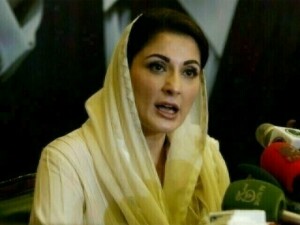A national debt conference jointly organised by PRIME and Business Recorder in collaboration with Friedrich Naumann Foundation emphasised the importance of debt management. Distinguished speaker after speaker at the conference expressed concern about the rising public debt as a component of budgetary expenditure and argued that until debt is reduced it would become a source of macroeconomic instability, low growth, high unemployment, and poverty.
Pakistan does not have a secondary debt market which is the main reason behind crowding out of private sector borrowing with all the negative implications for national productivity in the event that there is an increase in government borrowing. There has been a considerable manipulation of debt data in rupee terms, by understating external debt through market intervention to keep the exchange rate below its real rate. This is done as a policy decision that has cost the country export revenue with international buyers seeking a cheap market. And secondly, by the Ministry of Finance exerting control over the State Bank of Pakistan, irrespective of the several parliamentary bills that grant it autonomy, to include or exclude data based on a commitment that may or may not materialise.
The following data reveals the escalation of debt over three years: In 2012-13, the last year of PPP-led government's five-year tenure the budgeted debt (repayments and servicing due on foreign/local debts) was 2,700 billion rupees. This was an overestimate due mainly to the suspension of the International Monetary Fund programme that automatically led to a suspension of programme/budgetary support by other multilateral as well as bilateral sources, with 1,215 billion rupees in the revised estimates of the year. In 2013-14, the first year of the PML-N government, the budgeted debt payments envisaged 1,520 billion rupees allocation which in the revised estimates was 1,450 billion rupees. The reason for the decline: the strategy of the Finance Minister to clear domestic debt procured at 12 percent for the short-term from foreign debt that was procured at 5 to 6 percent payable in the long-term. In the current fiscal year the government envisages 1,657.5 billion rupees under this head or in other words, the rise in the budgeted allocation for debt repayments and servicing has been around 26.5 percent in comparison to the last year of the PPP-led coalition government.
The increase in the stock of debt as per the State Bank of Pakistan website has been as follows: from 14,574 billion rupees in June 2013 (with the PML-N government reportedly borrowing to eliminate the 400 billion rupee inter-circular energy sector debt) to over 15 trillion rupees in September 2013, to 16,321 billion rupees by June 2014. In percentage terms the rise has been around 11 percent. External debt rose from 6,036 billion rupees in June 2013 to 6,475 billion rupees by June 2014 - an amount that is impacted by keeping the rupee-dollar parity low and assuming no forward exchange rate risk that is already beginning to derail the debt calculations. However, this data would have to be massively revised if the government includes the 34 billion dollar inflows envisaged under the memoranda of understanding signed with China, which the government insists is investment inflow but as repayment is required they have to be included in any calculations of debt by the SBP - be it under the head of private or public sector debt.
The absolute amount of debt will continue to rise because of deficit financing. However, what is important is revenue collection rising faster than domestic debt accumulation. Furthermore, it needs to be examined whether or not the external debt rising slower than the rise in export proceeds.
Foreign inflows are contingent on the government's compliance with IMF conditions; one of which is to establish a debt management cell - a condition that the Advisor to the Finance Minister informed the conference participants would be complied with by next month. However, Salim Raza, a former governor of the SBP, rightly emphasised that any such cell should be autonomous and its terms of reference include cost reduction, development of government debt sustainability and building a framework for broad-based debt capital markets. In addition, the debt management office must be enabled to control consolidated national data base and centralised authority for planning, structuring, execution and market intervention for government debt.
Ministry of Finance and SBP need to be on the same page regarding what constitutes governmental debt. We are surprised to learn that PSEs debt is not part of public debt. Banks have given these loans mostly against sovereign guarantees. Besides, government is not willing to recognise SBP's liabilities as their own. There are various ways for minimising the existing debt. Expertise is available within the country provided the decision-makers are willing to follow their advice.
Unfortunately, however, few reckon that the Debt Management Cell would be granted autonomy or indeed allowed to function without Ministry of Finance's (MoF) intervention. The MoF has over the years consolidated power that has ill served the public by not only controlling and manipulating the data gathering machinery that accounts for misdirected policies but also through inappropriately influencing SBP decisions, a major reason cited for Salim Raza's resignation before his constitutionally granted term expired. A debt management cell working under the overt or covert directions of the MoF is hardly likely to meet its terms of reference. One can only hope that the MoF recognises the fact that autonomy in the real sense of the debt management cell. The Pakistan Bureau of Statistics as well as the State Bank of Pakistan and Securities and Exchange Commission of Pakistan (SECP) would improve their own performance by providing much-needed checks and balances. An independent policy board of debt management cell staffed by professionals who can interact with market players, with National Savings Centre (NSS) under its wings, is sorely needed. MoF needs to preannounce a volume-based auction calendar for government papers. It is the market which will determine the rates. And, the Debt Management Cell would create a framework to reduce its cost and create a broad-based debt capital market.
BR100
12,244
Increased By
148 (1.22%)
BR30
37,375
Increased By
548.1 (1.49%)
KSE100
115,094
Increased By
1009.7 (0.89%)
KSE30
35,611
Increased By
353.6 (1%)





















Comments
Comments are closed.